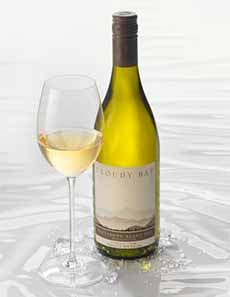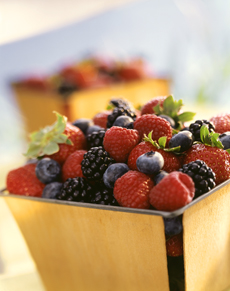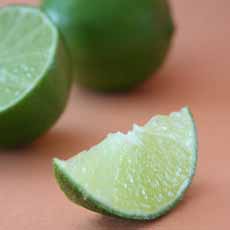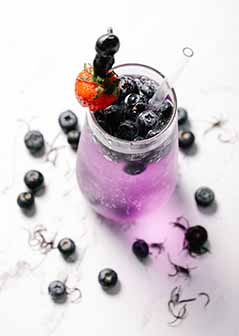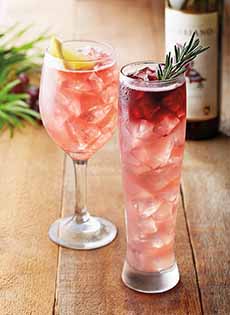Wine Spritz (Spritzer) Recipe & The Coravin Wine Preservation System
|
|
May 25th was National Wine Day, and since then we’ve been enjoying a daily wine spritzer using the recipe below. The recipe came to us from Coravin, a leading wine preserving system, which allows you to pour a glass from a bottle of wine without ever opening it. Watch this short video for a demo. Essentially, a thin needle goes through the cork and the wine is pumped into the glass. The cork heals after the needle is removed so the wine is safe from air. If you purchase a Coravin System directly from Coravin.com, you can try it at home risk-free. If you’re not completely satisfied, you may return it within thirty days of the purchase date. No one less than our favorite wine critic, Robert M. Parker, Jr., has hailed the Coravin System as “the most transformational and exciting new product for wine lovers that has been invented in the last 30+ years—this is a killer device.” The models start at a fairly-priced $249.95 and up, and are a great gift for a wine connoisseur who wants to drink costly bottles a glass or two at a time. Make yourself a wine spritzer—no Coravin required—as you contemplate the different models. > The history of the Spritz is below. > The history of Sauvignon Blanc. > The year’s 22+ white wine holidays. Starting note: While Americans tend to call this drink a spritzer, the proper name is Spritz. A plain wine Spritz combines wine and carbonated water, and perhaps a wine wedge. This one adds muddled berries and remains a low-calorie cocktail option. Ingredients Per Drink 1. MUDDLE the fruit in a wine glass, then fill the glass halfway with ice. 2. ADD the Sauvignon Blanc first; then add the seltzer to fill the glass. 3. SQUEEZE in the lime juice and stir. Add the whole pieces of fresh fruit and the squeezed lime wedges to garnish. In German, spritz means a splash or spray. A Spritzer is a tall, chilled drink, made from white wine (still or sparkling) and soda water. The Spritz Veneziano (Venetian Spritz or wine spritzer, as it’s called in the U.S.) is a wine-based cocktail, commonly served as an apéritif in northeastern Italy where Venice, and the Veneto region, are located. The drink originated in Venice while it was part of the Austrian Empire (1815-1866), and is based on the Austrian Spritzer, a combination of equal parts white wine and soda water. When the Habsburgs began to dominate the area of the Veneto, the Hapsburg soldiers, merchants, diplomats and administrative employees of who were stationed in the area, headed to the tavern for a glass of wine. But they found that the wines from the Veneto were significantly higher in alcohol content than the wines to which they were accustomed at home. They began to ask the tavern-keepers to spray a bit of water into the wine (spritzen, in German) to make the wines lighter. The original Spritz, in fact, was simply sparkling white or red wine diluted with water. The Spritz Evolves The first evolution of The Spritz arrived in the early 1900s, when siphons for carbonated water became widely available. They made it possible to make a sparkling Spritzer using still wine. The trend moved beyond the taverns: Austrian noblewomen, who because of the siphon now saw the drink as glamorous, drank it and served it in their homes. Over the years, the Spritz evolved to include liqueur (Aperol or Campari, e.g., garnished with an orange slice) or a bitter (China Martini or Cynar, e.g., garnished with a lemon peel or olive). In Venice and the surrounding Veneto area of northern Italy, Select, a local red bitter aperitif liqueur, is a popular pairing. Our favorite version is the Aperol Spritz, prepared with prosecco, Aperol, and a topping-off of sparkling mineral water. The Aperol Spritz is usually served over ice in a rocks glass or in a wine glass, and garnished with a slice of orange. Here’s the recipe. The recipes for spritzers are numerous, depending on local tastes and bartenders (source). When drilling down into a topic, we often check out the origin of the word. And with “Spritz,” a most German-sounding word, we found out that the word’s origin is…English! The German verb spritzen (“to spray” or “to splash”) is the direct linguistic root of both the English word “spritz” and the name of the popular wine cocktail. Why is “spritz” considered an English word today when it is based on a German word that dates back 1,000 years? Because it went through a process called anglicization: adapting a foreign word into English usage, spelling, and grammar—although changing the spelling from the Yiddish shprits to the German-style spritz becasuse the “shp” sound was less familiar. By 1917, “spritz’ appeared in English dictionaries. Once a word takes on English grammar endings (-ing, -ed), it is officially an English word. |
|
|
CHECK OUT WHAT’S HAPPENING ON OUR HOME PAGE, THENIBBLE.COM. |
||
